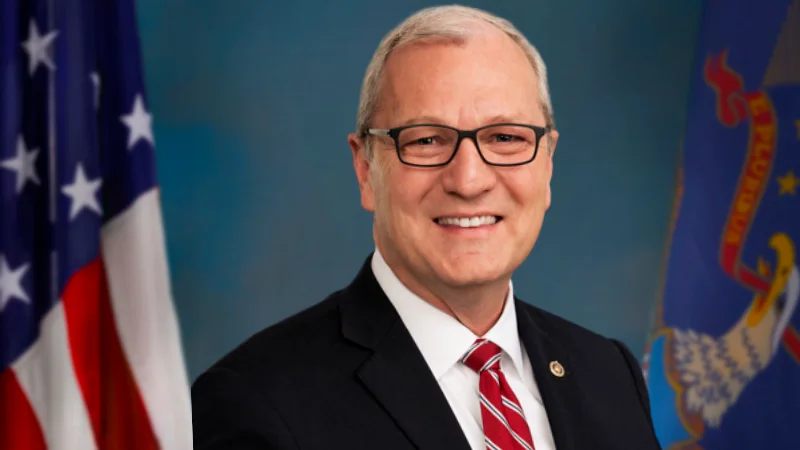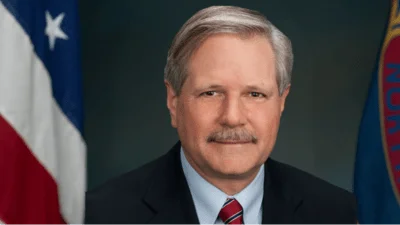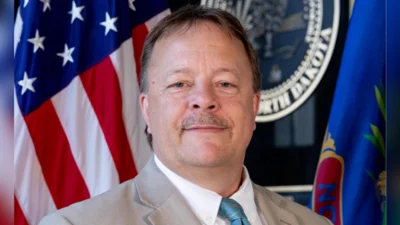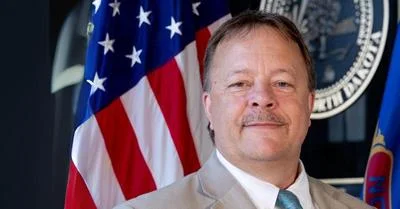Senator Kevin Cramer, US Senator for North Dakota | Senator Kevin Cramer Official website
Senator Kevin Cramer, US Senator for North Dakota | Senator Kevin Cramer Official website
The United States Senate has approved the Fiscal Year 2026 National Defense Authorization Act (NDAA) with a vote of 77 to 20, allocating more than $900 billion for defense initiatives. The legislation is intended to reform Pentagon budgeting and acquisition processes, increase military readiness, and strengthen recruitment while improving service member quality of life.
This year’s NDAA includes bipartisan provisions led by Senators Kevin Cramer (R-ND) and Amy Klobuchar (D-MN), expanding free credit monitoring services to non-active-duty reservists and traditional National Guard members. Previously, this benefit was only available to active-duty service members and full-time National Guard personnel. The bill also contains the Honoring Our Fallen Heroes Act, authored by Cramer and Klobuchar, which provides support for families of first responders who die from service-related cancers due to carcinogen exposure.
Senator Cramer, chair of the Senate Armed Services Airland Subcommittee and founding co-chair of the Senate Space Force Caucus, commented on the passage: “As we face what I believe to be the most dangerous national security moment since World War II, this NDAA really recognizes the need to deter our adversaries. And to do that, we need to invest in our offensive capabilities and our innovation, and make generational reforms to the Pentagon, all the while staying focused on the mission at hand,” he said. “This bill does that. Peace Through Strength isn’t just a bumper sticker, as I like to say. It’s a fundamental principle, and if we don’t shake up the status quo and accelerate modernization we’re going to lose. By passing this bill, we’re prioritizing the safety and security of the American people across the board. Thanks to Leader Thune and Chairman Wicker for getting this bill on the floor and getting it the time on the Senate floor it deserves. I really look forward to working with my colleagues in the House, President Trump, and his administration to rebuild what is, and always has been, and must always be the arsenal of democracy.”
The NDAA contains amendments supported by Senator Cramer aimed at restricting U.S. investments in China. These measures give authority to the Secretary of Treasury to prohibit certain transactions involving sensitive technologies in China and require notification for U.S. investments in those areas. Sanctions may also be imposed on Chinese entities linked with military or intelligence sectors.
As a member of SASC, Senator Cramer secured funding authorizations for several North Dakota-based defense projects:
“This NDAA supports the development of President Trump’s Golden Dome missile defense architecture by requiring the modernization of PARCS at Cavalier Space Force Station, making it more relevant than ever against today's threats. The bill puts the legislative muscle behind modernizing our missile defense infrastructure,” he stated.
Funding will go toward upgrading Cavalier Space Force Station’s Perimeter Acquisition Radar Attack Characterization System (PARCS), which tracks over half of earth-orbiting objects. The improvements are expected to enhance detection capabilities against various missile threats as well as boost space domain awareness.
Cavalier SFS will contribute significantly to President Donald Trump’s Golden Dome layered missile defense initiative designed to protect against ballistic missiles, cruise missiles, hypersonic threats, and drones across all domains.
Senators Cramer and Dan Sullivan (R-AK) introduced related legislation known as GOLDEN DOME Act supporting next-generation missile defense efforts.
Regarding Grand Forks Air Force Base (GFAFB), Senator Cramer said: “With its RQ-4 Global Hawks and strategically important ISR capabilities, Grand Forks Air Force Base significantly contributes to the global engagement mission. This NDAA ensures our country sustains RQ-4 Global Hawk operations and secures funding for future satellite missions to be controlled in Grand Forks.” Investments include continued operation requirements for RQ-4 Global Hawks as well as support for local company Technology Applications Group’s corrosion-resistant coatings used in magnesium surface protection.
The act also allocates resources for Tranche 3 satellites under Space Development Agency’s Proliferated Warfighter Space Architecture program meant to improve detection of advanced missile systems globally.
On Minot Air Force Base's role within U.S. nuclear deterrence strategy: “As the only base to house two legs of the nuclear triad, Minot Air Force Base is the pinnacle of defensive capabilities... This NDAA ensures we strategically maintain... long-range strike... nuclear response capabilities against global adversaries while fulfilling our commitment to modernize our nuclear arsenal against future threats.” The Sentinel intercontinental ballistic missile program will replace aging Minuteman III missiles; budget provisions require maintaining at least 400 ICBMs.
Additionally, there are recommendations encouraging establishment of wing-level additive manufacturing facilities by U.S. Air Force units—aimed at increasing readiness while reducing maintenance costs.
For Remotely Piloted Aircraft crews operated by North Dakota's “Happy Hooligans” unit in Fargo: “The Happy Hooligans’ military excellence... demonstrates their vital role... My bill with Senator Rosen... creates a status identifier for Remotely Piloted Aircraft crews...” A formal combat identifier will allow Veterans Affairs benefits administration tied directly with RPA combat missions through new recognition measures proposed by Senators Cramer and Jacky Rosen (D-NV).
Finally, planning funds are authorized for a new National Guard Armory facility in Jamestown—a top priority project—supporting North Dakota Guardsmen's state-wide readiness: “Our North Dakota National Guardsmen are... providing key support defending homeland... Jamestown National Guard Armory acts as central facility...”





 Alerts Sign-up
Alerts Sign-up